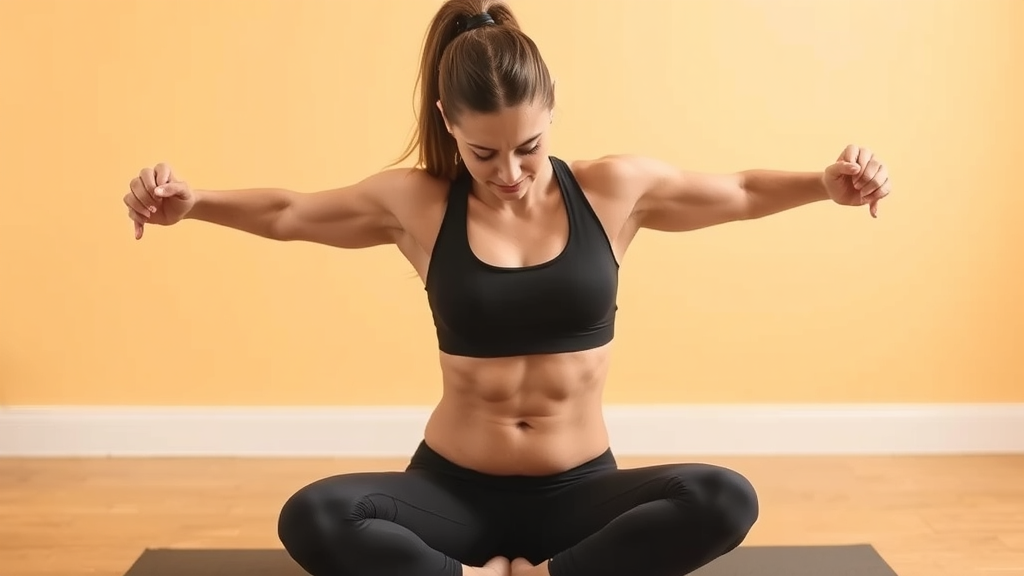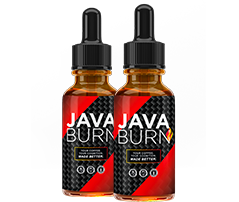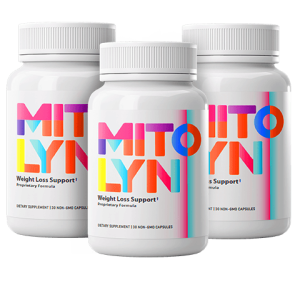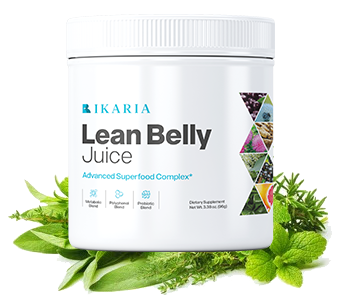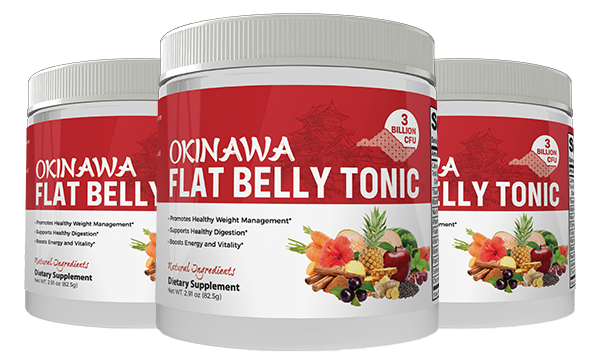Do Sit-Ups Burn Belly Fat? Understanding the Truth Behind Spot Reduction
Many people believe that doing sit-ups can help them shed unwanted belly fat. However, it’s essential to uncover the truth behind this popular myth. The concept of “spot reduction” suggests you can lose fat in specific areas of your body by working out those muscles. So, do sit-ups really burn belly fat? Let’s explore this topic in detail.
First, it’s crucial to understand what happens when you do sit-ups. Sit-ups primarily strengthen the abdominal muscles. They can help tone your core and improve your overall strength but they do not specifically eliminate fat from your abdomen. While this exercise is beneficial for building muscle, it doesn’t directly result in fat loss from the belly area. To truly understand this, we need to look at how fat loss actually works.
The body loses fat based on its overall caloric expenditure. This means that to lose fat, including belly fat, you need to burn more calories than you consume. Traditional exercises like running, swimming, or cycling tend to be more effective in creating a calorie deficit than isolated movements like sit-ups. Here’s how to burn belly fat more effectively:
- Engage in Cardiovascular Workouts: Activities like jogging, walking, and cycling can help burn calories quickly.
- Incorporate Strength Training: Lifting weights or using resistance can build muscle, which burns more calories at rest.
- Establish a Balanced Diet: A healthy diet can significantly impact your caloric intake. Focus on whole foods, high in fiber, and low in added sugars.
- Stay Consistent: Consistency in your exercise regime and dietary choices creates lasting change.
Thinking that you can solely perform sit-ups to reduce belly fat is a misconception. A famous saying in the fitness community goes, “Abs are made in the kitchen.” This emphasizes that diet plays a critical role in fat loss. By managing your calorie intake and choosing nutritious foods, you can accelerate fat loss all over your body, including your belly.
Furthermore, research indicates that doing targeted exercises does not directly result in fat loss in that specific area. When you lose weight, your body decides where to shed fat based on genetics, hormonal balance, and overall body composition. This means that while sit-ups can contribute to a stronger core, they will not solely impact belly fat reduction. The body may lose fat from various areas first, and you might not see results in the abdomen immediately.
Here’s a clearer breakdown to debunk the myth:
| Factor | Sit-Ups | Caloric Deficit Exercise |
|---|---|---|
| Target Muscle | Abdominal muscles | Whole body |
| Fat Loss | No direct effect | Effective for reducing fat |
| Caloric Burn | Low | Higher |
| Requires | Core strength | Full-body workouts |
Instead of focusing solely on sit-ups, integrate a variety of exercises into your routine. Combine cardio with strength training and core workouts to achieve better overall fitness. This comprehensive approach can not only improve muscle definition but also help in losing belly fat.
If you want to know more about effective belly fat loss strategies, consider visiting reputable resources like Healthline or WebMD for quality advice.
While sit-ups can aid in developing strong abdominal muscles, they do not burn belly fat on their own. Instead, focus on creating a balanced exercise routine that includes both cardiovascular and strength training exercises along with healthy eating choices. This comprehensive strategy will help you achieve your fitness goals more effectively.
The Science of Fat Loss: How the Body Burns Fat
Understanding how the body burns fat is pivotal to anyone looking to achieve weight loss and better health. The science of fat loss hinges on several core concepts that can guide your fitness journey effectively. If you’re curious about how your body processes and utilizes fat, you’re in the right place.
At its core, fat loss occurs when your body creates a negative energy balance. This means that you are burning more calories than you consume. But how exactly does this process unfold? Let’s break it down.
Caloric Deficit and Fat Utilization
Creating a caloric deficit is the first step in burning fat. Here’s how it works:
- You consume fewer calories through your diet.
- Your body requires energy for basic functions like breathing, circulation, and cell production.
- When your calorie intake falls short of your body’s energy needs, your body seeks energy from its fat stores.
This process triggers the release of fatty acids into the bloodstream, which are then used to fuel your muscles and organs.
Hormonal Influence on Fat Loss
Hormones play a significant role in fat metabolism. Here are a few key hormones involved:
- Insulin: High levels of insulin can inhibit fat burning. It’s essential to manage carbohydrate intake to keep insulin levels balanced.
- Cortisol: Chronic stress can lead to elevated cortisol levels, which may encourage fat storage, especially around the abdomen.
- Leptin and Ghrelin: These hormones help regulate hunger and satiety. Leptin promotes feelings of fullness, while ghrelin signals hunger.
Maintaining hormonal balance is crucial for effective fat loss, highlighting the importance of a well-rounded approach to diet and exercise.
Fat Oxidation During Exercise
When you engage in physical activity, your body can burn fat for fuel, especially during aerobic exercises like walking, running, or cycling. Here’s how the process works:
- During low to moderate-intensity workouts, your body primarily burns fat.
- As exercise intensity increases, your body starts to utilize glycogen (carbohydrate stores) more heavily.
For optimal fat loss, incorporating both aerobic and anaerobic exercises into your routine can be beneficial. The American College of Sports Medicine provides valuable insights about various types of exercise and their effects on fat loss.
Importance of Nutrition
Nutrition is foundational in the science of fat loss. Consider the following:
- A well-balanced diet that includes lean proteins, healthy fats, whole grains, and plenty of fruits and vegetables helps manage your caloric intake.
- Tracking your macronutrients can also help you understand your consumption levels and adjust as needed for better fat-burning efficiency.
Research highlights the importance of nutrition in fat loss rates. You can find comprehensive dietary guidelines on Eat Right by the Academy of Nutrition and Dietetics.
How Long Does Fat Loss Take?
The timeline for fat loss can vary from person to person. However, a common guideline is to aim for losing 1 to 2 pounds per week. This steady pace helps ensure that you are losing fat and not muscle. Here’s a general breakdown:
| Weight Loss Rate | Weekly Caloric Deficit |
|---|---|
| 1 pound | 3,500 calories |
| 1.5 pounds | 5,250 calories |
| 2 pounds | 7,000 calories |
This kind of gradual loss is sustainable and less likely to result in the yo-yo dieting effects associated with rapid weight loss strategies.
Ultimately, understanding the science of fat loss not only empowers you but also equips you with the knowledge needed to make informed choices about your health and fitness. For more insightful resources, you can check out websites like PubMed Central that delve deep into the research behind fat loss.”
Effective Exercises for a Trimmed Waistline
For many, achieving a trimmed waistline is a common fitness goal. While diet plays a crucial role, incorporating effective exercises is equally essential for seeing results. Below are several workouts that can help you tone your midsection and achieve a beautiful waistline.
Core Strengthening Exercises
Strengthening your core is fundamental when aiming for a trimmed waistline. Here are some excellent core exercises:
- Planks: This full-body exercise targets your abdominal muscles effectively. Start with a 20-30 second hold and gradually increase the duration.
- Russian Twists: Sit on the floor, lean back slightly, and twist your torso, touching the ground beside you. This exercise targets your obliques.
- Leg Raises: Lie flat on your back, keeping your legs straight. Raise them towards the ceiling while keeping your back engaged.
Cardio Workouts
Cardio is essential for burning calories and fat, including around your waist. Here are some effective cardio workouts:
- Running or Jogging: Regular jogging or running can significantly help reduce overall body fat, including belly fat.
- Cycling: Whether you’re outdoors or on a stationary bike, cycling can be an excellent way to burn calories and strengthen your lower body.
- Jump Rope: This is a simple yet effective cardio workout. Just a few minutes of jumping can torch calories.
High-Intensity Interval Training (HIIT)
HIIT workouts can be very effective for weight loss. They involve short bursts of intense exercise followed by rest periods. Here are some HIIT exercises to consider:
- Burpees: This full-body exercise combines a squat, push-up, and jump to maximize calorie burning.
- Mountain Climbers: A core exercise that also spikes your heart rate, making it perfect for a HIIT routine.
- Sprints: sprints into your routine can boost fat loss. Alternate between running fast and walking.
Strength Training
Strength training helps build muscle, which can increase your metabolism. Here are some exercises that target core muscles while helping tone your waistline:
- Deadlifts: Engaging multiple muscle groups, deadlifts improve overall strength and help tone the waist.
- Squats: While they primarily target legs, squats engage your core when performed correctly.
- Push-Ups: Although mainly a chest exercise, push-ups activate various core muscles as well.
Yoga and Pilates
Yoga or Pilates into your routine can enhance flexibility and core strength. Both practices focus on body control and can lead to a trimmed waistline:
- Boat Pose: This yoga position strengthens your core muscles effectively.
- Plank Variations: Many Pilates exercises involve plank variations, which are great for your abdomen.
- Side Plank: This variation targets your obliques and improves balance.
The Importance of Nutrition
While exercise is vital for trimming your waistline, it must be complemented with proper nutrition. Here are some tips to consider:
- Focus on whole, unprocessed foods. Incorporate fruits, vegetables, lean proteins, and whole grains.
- Stay hydrated. Drinking enough water can help reduce bloating.
- Pay attention to portion sizes. Eating mindfully can prevent overeating.
By consistently incorporating these exercises into your routine and maintaining a healthy diet, you can attain a trimmed waistline. Remember that results may vary based on individual effort and genetics. Always consult with a fitness professional before starting any new exercise program.
For more insights on achieving a trim waistline, visit Healthline or check out Mindbodygreen.
The Role of Nutrition in Reducing Belly Fat
When it comes to reducing belly fat, many people focus solely on exercise. However, nutrition plays an equally important role in achieving those fitness goals. Understanding which foods to consume and which to avoid can significantly influence your body’s ability to shed excess fat, especially in the abdominal area.
The Importance of a Balanced Diet
A balanced diet is fundamental when targeting belly fat reduction. It involves consuming an appropriate amount of macronutrients—carbohydrates, proteins, and fats. Here’s a quick overview of each:
- Carbohydrates: Opt for whole grains, fruits, and vegetables. These provide energy and fiber, aiding digestion and satiety.
- Proteins: Lean meats, fish, beans, and legumes help build muscle and maintain metabolism, which can promote fat loss.
- Fats: Healthy fats like avocados, nuts, and olive oil are essential. They support healthy body functions and keep you full longer.
Foods That Help Reduce Belly Fat
Specific foods into your diet can expedite the reduction of belly fat:
- Fiber-Rich Foods: Foods high in soluble fiber, like oats, flaxseeds, and beans, help reduce hunger and aids in weight loss.
- Watermelon: This hydrating fruit is low in calories and high in water content, making it a great snack for weight management.
- Green Tea: Rich in antioxidants, consuming green tea may help boost metabolism and promote fat loss.
- Lean Proteins: Fish, chicken, and legumes not only help in maintaining muscle mass but also encourage body fat reduction.
- Probiotics: Foods such as yogurt and fermented foods enhance gut health, which is linked to better weight management.
The Danger of Processed Foods
Avoiding processed foods is crucial in reducing belly fat. These items often contain added sugars, unhealthy fats, and artificial ingredients that can lead to weight gain. Instead, prioritize whole, unprocessed foods in your meal planning. Here’s what to watch out for:
- Sugary beverages (sodas, sweetened teas)
- Processed snacks (chips, cookies)
- Ready-to-eat meals
- Excessive alcohol consumption
Portion Control and Mindful Eating
Mindful eating techniques can also assist in managing portions and reducing the intake of unhealthy foods. Listening to your hunger cues helps you avoid overeating. Some simple practices include:
- Eat slowly and without distractions.
- Pay attention to the taste and texture of your food.
- Use smaller plates to help control portion sizes.
Caloric Deficit for Belly Fat Reduction
Creating a caloric deficit—consuming fewer calories than your body burns—is essential for fat loss. This can be achieved through a combination of diet and exercise. Here’s a simple plan:
- Track your daily caloric intake using mobile apps or food diaries.
- Include physical activity to increase your calorie expenditure.
- Aim for a weekly deficit of 3,500 calories to lose approximately one pound per week.
Focusing solely on exercise won’t yield optimal results in belly fat reduction. A well-rounded nutrition plan that prioritizes balanced meals, whole foods, and mindful eating practices plays a key role in achieving your goals. Remember, it’s not just about what you eat but how you eat that matters in this journey.
For more information on nutrition and fat loss, visit Eat Right, a comprehensive resource for nutrition topics.
| Food Type | Benefits |
|---|---|
| Fiber-Rich Foods | Supports digestion and prolongs feelings of fullness. |
| Lean Proteins | Helps maintain muscle mass and metabolism. |
| Healthy Fats | Aids in nutrient absorption and promotes satiety. |
| Hydrating Foods | Keeps calorie intake low while satisfying hunger. |
Making conscious choices about your nutrition can lead to significant changes in your body and help you achieve your fitness goals. Start today by implementing these strategies and watch as the results unfold.
Common Myths About Exercise and Weight Loss
When it comes to exercise and weight loss, there are many misconceptions that can lead to confusion and frustration. Understanding the truth behind these myths is crucial for achieving your fitness goals. Here, we will debunk some of the most common myths about exercise and weight loss, providing you with factual information to guide your journey.
Myth 1: You can spot reduce fat in specific areas
Many people believe that exercises targeting a specific body part will help them lose fat in that area, such as sit-ups for the belly. Unfortunately, this is not true. Fat loss happens throughout the body as a result of overall calorie expenditure, not just from the muscles you work. Focus on a balanced workout routine that includes cardio and strength training to see effective results.
Myth 2: Lifting weights makes you bulky
Another common myth is that lifting weights will lead to a bulky physique, especially among women. In reality, weight training helps to build lean muscle, boost metabolism, and promote fat loss. It is important to incorporate resistance training into your fitness routine for optimal results, regardless of your gender.
Myth 3: Cardio is the only way to lose weight
While cardio exercises, like running or cycling, are excellent for burning calories, they are not the only option for weight loss. Strength training can also contribute to weight management by increasing muscle mass, which in turn raises your resting metabolic rate. A combination of both cardio and strength training is the most effective approach for sustainable weight loss.
Myth 4: You can out-exercise a poor diet
It is often said that you can’t out-exercise a bad diet, and this statement holds true. Exercise is essential for weight loss, but without proper nutrition, efforts may not yield significant results. Consuming whole, nutrient-dense foods while managing portion sizes will support your weight loss even more effectively than exercise alone.
Myth 5: You need to exercise for hours every day to lose weight
Many individuals believe that long workout sessions are necessary for weight loss. However, research shows that shorter, more intense workouts can be just as effective. High-Intensity Interval Training (HIIT) is a great example of a time-efficient workout that promotes fat loss while maximizing calorie burn in a shorter period.
Myth 6: Supplements can replace proper nutrition
The weight loss industry is flooded with supplements promising quick fixes. Many people fall for the belief that taking supplements can replace a healthy diet and consistent exercise. In truth, there is no substitute for a balanced diet rich in vitamins and minerals. Always prioritize whole foods over supplements whenever possible.
Myth 7: You should never eat before working out
Some people think that working out on an empty stomach burns more fat. However, this can lead to inadequate energy levels, causing you to perform poorly during exercises. Eating a small snack prior to working out can provide you with the needed energy to maximize your performance, helping you reach your fitness goals.
Myth 8: All exercise is created equal
Not all workouts yield the same results. Different types of exercise serve various purposes, and combining them can enhance your overall fitness. Cardio improves heart health and burns calories, while strength training builds muscle. flexibility and balance exercises, like yoga or Pilates, can improve your overall functionality and performance.
By dispelling these myths, you can make better-informed decisions about your exercise routine and weight loss strategy. Remember to focus on balanced nutrition, a mix of different exercises, and set realistic goals. For more information on effective workout strategies, consider visiting ACE Fitness or NLM for credible health resources.
Always consult with fitness professionals or registered dietitians before starting a new workout or diet regimen to ensure you are on the right track for your personal health journey.
How to Create a Balanced Fitness Routine
Creating a balanced fitness routine is essential for achieving overall health and wellness. A well-rounded approach not only helps you reach your fitness goals but also makes exercise more enjoyable and sustainable. Here are some key components to consider when crafting your ideal routine:
Strength Training
Strength training into your routine is crucial for building muscle, improving metabolism, and enhancing bone health. Aim for at least two strength training sessions per week, targeting all major muscle groups, including:
- Chest
- Back
- Legs
- Shoulders
- Arms
Exercises can include bodyweight movements like push-ups and squats, as well as weightlifting with dumbbells or resistance bands. For more tips on strength training, visit Bodybuilding.com.
Cardiovascular Fitness
Cardio workouts are vital for heart health and calorie burning. Aiming for at least 150 minutes of moderate aerobic activity or 75 minutes of vigorous activity each week is ideal. Consider mixing different forms of cardio to keep things interesting. Popular choices are:
- Running or jogging
- Cycling
- Swimming
- Brisk walking
- Dancing
To learn more about different cardio exercises, check out ACE Fitness.
Flexibility and Mobility
Flexibility is often overlooked in fitness routines but is essential for overall mobility and injury prevention. Incorporate stretching exercises and mobility workouts into your weekly schedule. Activities such as yoga and Pilates not only improve flexibility but also promote relaxation and mindfulness. Aim to do flexibility exercises at least three times a week.
Rest and Recovery
Rest days are an important aspect of any fitness routine. They allow your muscles to recover and prevent burnout. Ensure you take at least one to two rest days each week. Listen to your body and don’t hesitate to take additional time off if needed. Utilize this time for light activities like stretching or walking.
Nutrition Considerations
Your fitness gains will be greatly influenced by your nutrition. Eating a well-balanced diet rich in whole foods is critical. Focus on:
- Lean proteins (e.g., chicken, fish, beans)
- Healthy fats (e.g., avocados, nuts, olive oil)
- Whole grains (e.g., brown rice, quinoa, whole grain bread)
- Fruits and vegetables
Consult a registered dietitian for personalized nutrition advice that complements your fitness routine. For additional nutritional resources, consider visiting Eat Right.
Setting Realistic Goals
When establishing your fitness routine, it’s important to set realistic and achievable goals. Consider using the SMART criteria, which stands for:
- S: Specific – Clearly define what you want to accomplish.
- M: Measurable – Attach metrics to your goals, such as weight loss or distance run.
- A: Achievable – Ensure your goals are attainable given your lifestyle and resources.
- R: Relevant – Goals should matter to you and align with your overall wellness journey.
- T: Time-bound – Set a timeline for achieving your goals.
Monitoring Progress
Tracking your progress can encourage motivation and accountability. Use a journal or fitness app to log workouts, nutrition, and any changes in your physical state. This not only helps you stay on track but also allows you to adjust your routine as needed. Some popular fitness tracking apps include MyFitnessPal and Fitbit.
By following these guidelines, you can create a balanced fitness routine tailored to your individual needs. It’s essential to remember that consistency is key. Stay engaged, adapt as necessary, and don’t hesitate to seek professional guidance when needed. For more assistance and resources, check out Verywell Fit.
Alternative Core Workouts to Enhance Overall Fitness
Core workouts are essential for overall fitness as they engage multiple muscle groups that stabilize your body. While traditional sit-ups are popular, many alternative core workouts can enhance your strength, stability, and endurance. Here are some effective alternative core workouts to consider in your fitness routine.
Planks
Planks are a powerful exercise that engages your entire core, including your shoulders and back. They help build endurance and promote better posture.
- Start in a push-up position with your arms directly under your shoulders.
- Keep your body in a straight line from head to heels.
- Hold the position for 30 seconds to a minute. Gradually increase your hold time as you gain strength.
Russian Twists
This exercise targets your oblique muscles, providing a great rotational strength training workout. It’s ideal for enhancing stability during various physical activities.
- Sit on the floor with your knees bent and feet flat.
- Lean back slightly and lift your feet off the ground to balance.
- Hold a weight or medicine ball and twist your torso to the right, then to the left, to complete one rep.
- Perform 10 to 15 reps on each side.
Mountain Climbers
Mountain climbers are a dynamic exercise that gets your heart rate up while targeting your core muscles. They also work on your agility and coordination.
- Start in a plank position with your hands below your shoulders.
- Bring one knee towards your chest, then return it while bringing the other knee forward.
- Continue alternating legs as quickly as possible for 30 seconds.
Dead Bugs
This exercise is optimal for beginners and anyone looking to improve their core stability. It targets the lower back and abdominal region effectively.
- Lie on your back with your arms extended towards the ceiling and knees bent at 90 degrees.
- Slowly lower your right arm and left leg toward the floor while keeping your back flat.
- Return to the starting position and switch sides. Repeat for 10 to 15 reps per side.
Bicycle Crunches
Bicycle crunches can enhance both the upper and lower abdominal muscles as well as the obliques. This exercise promotes a greater range of motion.
- Lie on your back with your hands behind your head and legs raised at a 90-degree angle.
- Bring your right elbow toward your left knee while straightening your right leg out.
- Switch sides, bringing your left elbow towards your right knee. Alternate for 15 to 20 reps.
Yoga and Pilates
Both yoga and Pilates focus on core strength and stability. these practices into your fitness routine will provide long-term benefits for your core muscles.
- Yoga Journal features various yoga sequences targeting core strength.
- Pilates Anytime offers online classes focused on core stability and strength.
These alternative core workouts into your fitness routine can help improve your overall fitness levels. By engaging different muscles, you create a balanced core workout that contributes to greater stability and functionality in daily activities. Remember to listen to your body and progress at your own pace to avoid injury.
Additionally, maintaining a balanced diet can complement your fitness journey. Always consult with a fitness professional if you’re new to these exercises or want to diversify your program. This way, you’ll get the most out of your workouts and remain safe while reaching your fitness goals.
If you’re looking for structured programs or additional information on core workouts, consider checking fitness websites such as Bodybuilding.com or MyFitnessPal.
Key Takeaway:
When it comes to the age-old question of whether sit-ups burn belly fat, the truth is more nuanced than many people realize. A deeper understanding of spot reduction reveals that targeting fat loss in specific areas through exercises like sit-ups is largely a myth. Instead, your body burns fat in a more holistic manner. When you engage in physical activity, your body will draw from its fat reserves in various areas—often not the one you are focusing on.
The science of fat loss operates on the principle that there is no singular, quick-fix exercise that will eliminate belly fat. Fat loss happens when you burn more calories than you consume, creating a caloric deficit. Therefore, while sit-ups and similar core exercises can help strengthen and tone your abdominal muscles, they do little for reducing fat specifically around your waistline.
To effectively trim your midsection, it is crucial to engage in a variety of exercises. Cardiovascular workouts, like running, cycling, or swimming, combined with strength training, are indispensable for burning calories and promoting overall fat loss. Additionally, incorporating high-intensity interval training (HIIT) can elevate your heart rate and boost your metabolism, further supporting your weight loss efforts.
However, exercise alone isn’t enough. Nutrition plays a foundational role in losing belly fat. Eating a balanced diet rich in whole foods—fruits, vegetables, lean proteins, and healthy fats—can support your efforts in shedding unwanted weight. It’s essential to be mindful of portion sizes and avoid processed foods, which often add empty calories.
Alongside understanding the science of fat loss and the importance of nutrition, recognizing common myths about exercise and weight loss can equip you with the right mindset. For example, many believe that doing endless sit-ups will lead to a flat stomach, but doing so without addressing other factors will likely lead to frustration and stagnation in your progress.
Creating a balanced fitness routine that combines various types of exercises and focuses on overall health is more effective than fixating on a single body part. Exploring alternative core workouts, such as planks, leg raises, and Pilates, will not only enhance your overall fitness but also engage your core in a more comprehensive manner.
To burn belly fat effectively, prioritize comprehensive fat-loss strategies that include a well-rounded exercise regimen and nutrition plan, rather than relying solely on sit-ups or similar exercises. Remember, true fitness is about balance and sustainability.
Conclusion
Understanding whether sit-ups burn belly fat is important, but it’s only part of the broader picture of fat loss and fitness. The truth about spot reduction is clear: you cannot target specific areas for fat loss through isolated exercises alone. Instead, effective weight loss involves a combination of consistent exercise, a well-balanced diet, and overall body fat reduction.
The body utilizes fat stores as energy during physical activity, but this process is systemic rather than localized. Establishing a routine that includes a range of effective exercises is crucial for achieving a trimmed waistline. Activities such as running, swimming, and resistance training can enhance overall fat burning more effectively than sit-ups alone.
Nutrition also plays a significant role in belly fat reduction. Adopting a diet rich in whole foods, lean proteins, healthy fats, and ample fiber will support your fitness goals. Remember that common myths about exercise and weight loss can sabotage your progress, so staying informed is key.
Creating a balanced fitness routine is essential for long-term success. Incorporate both cardio and strength training to maximize fat loss and overall conditioning. Additionally, consider alternative core workouts—like planks, mountain climbers, and Pilates—that engage multiple muscles and improve core strength without excessive reliance on traditional sit-ups.
By focusing on a holistic approach, including varied exercises and smart nutrition, you’ll be better equipped to achieve your fitness goals. Embrace a comprehensive strategy, and you’ll see results that go beyond just the number on the scale, transforming not only your waistline but your overall health and well-being.
